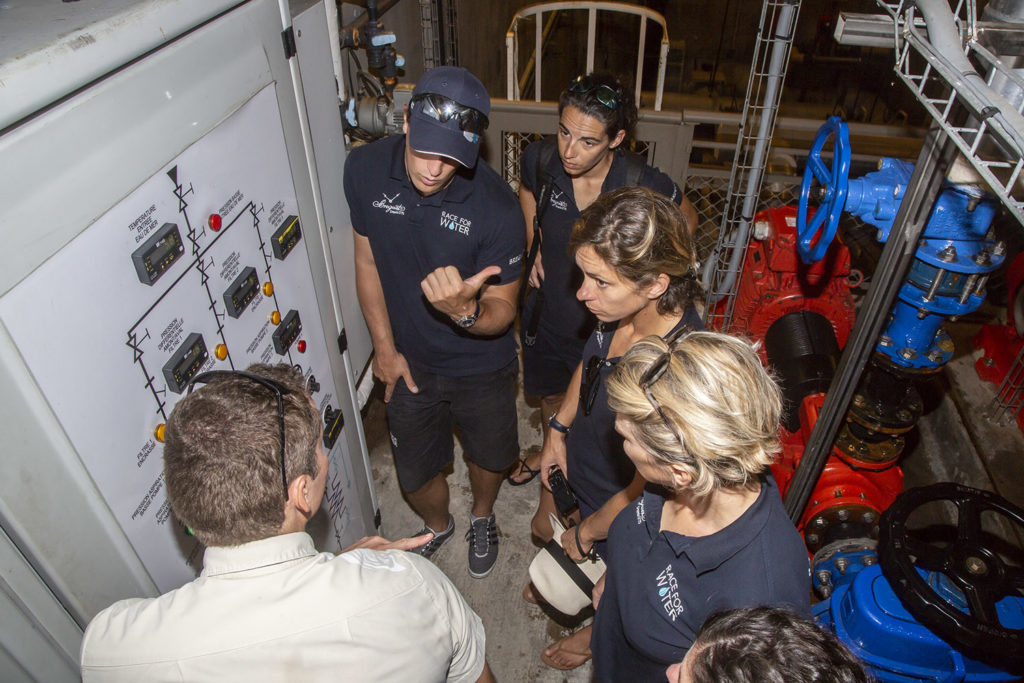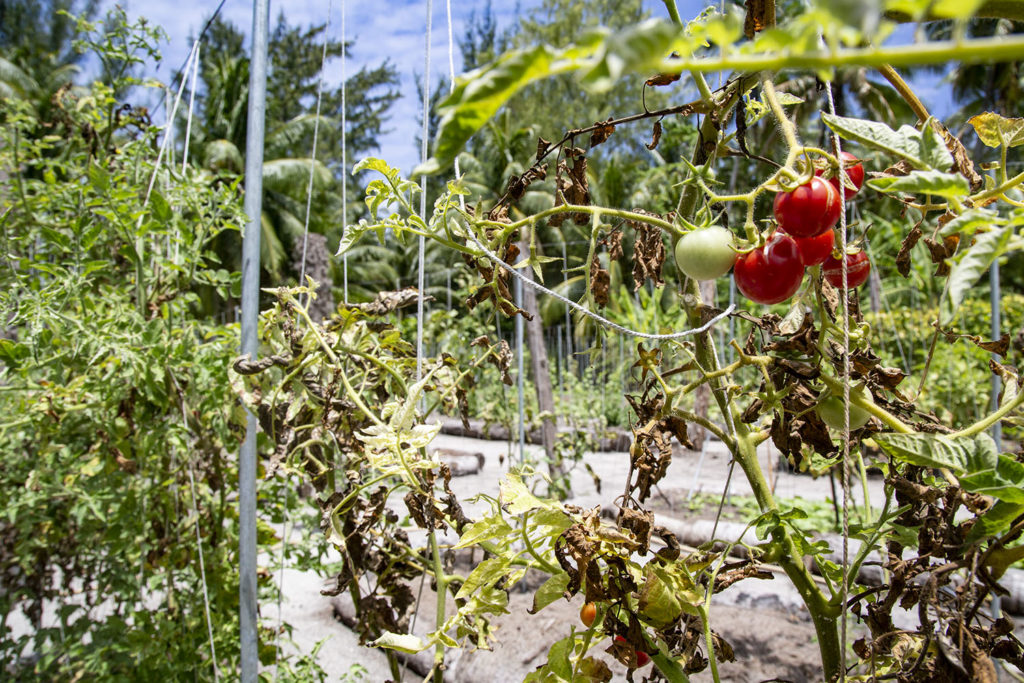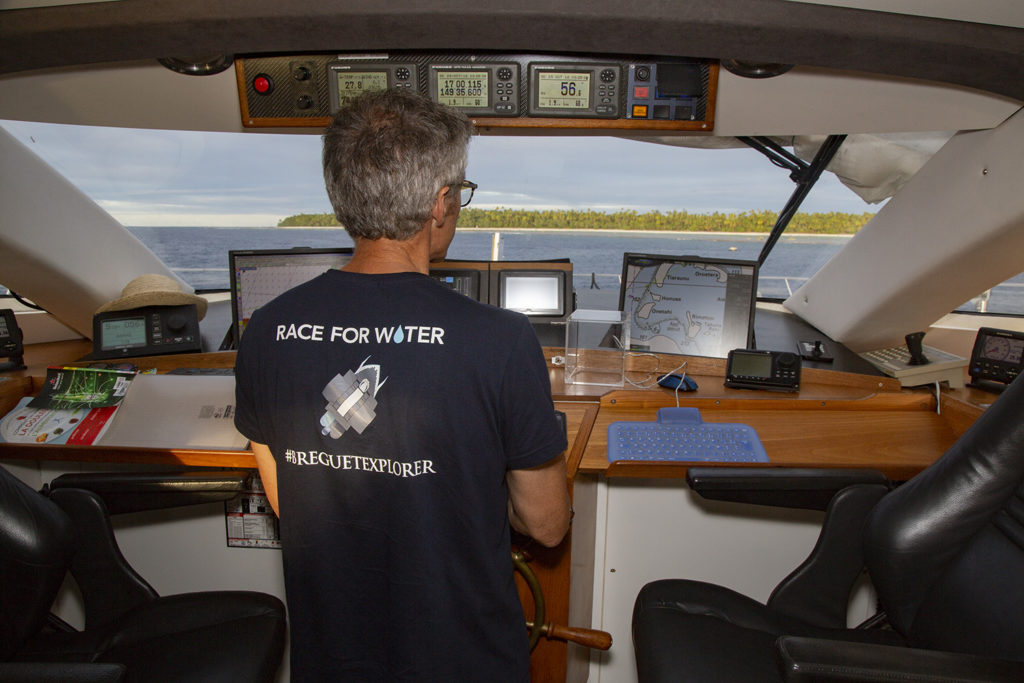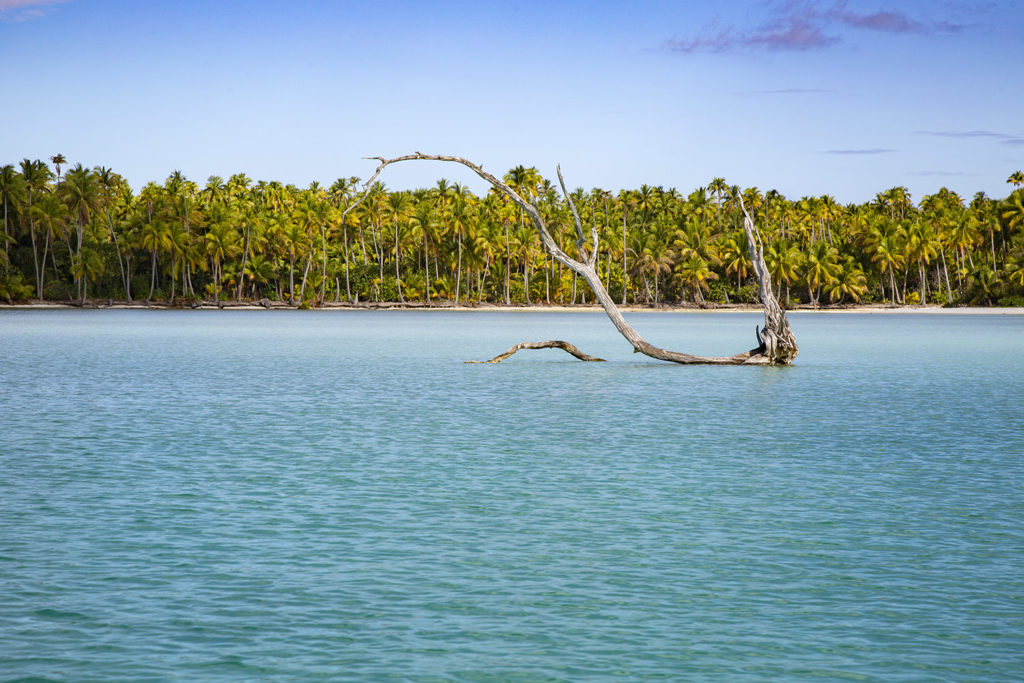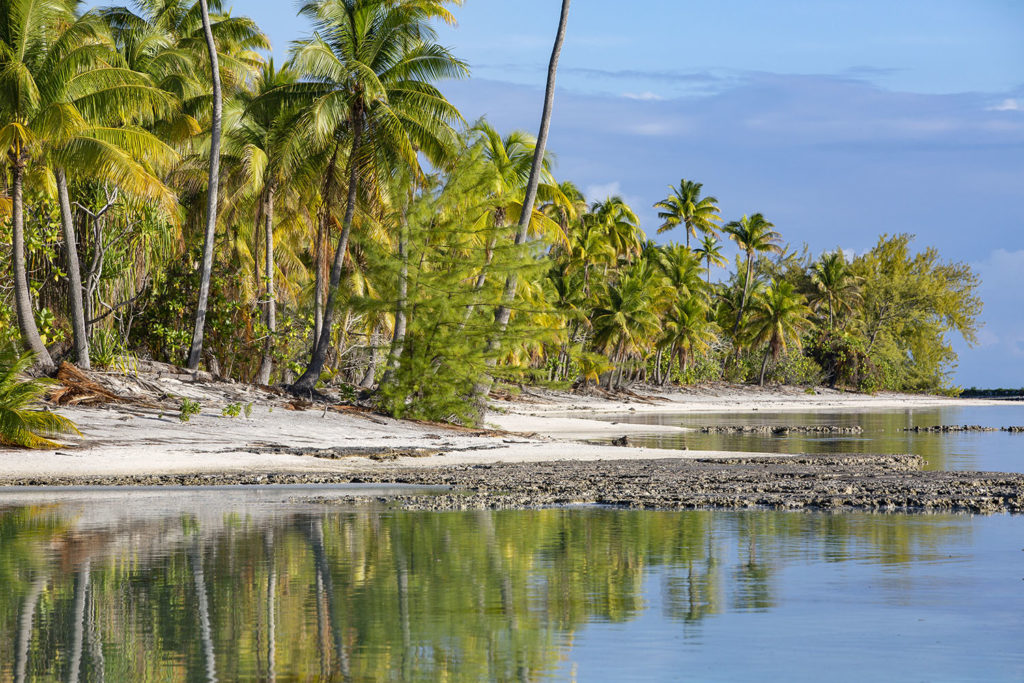Memories, memories…
Our crew is studious and focused on the task in hand, safely moored in the port of Papeete. However, minds are roaming a little for some. The same day, two visions. Flashback on Race for Water’s discovery of Tétiaroa! Tetiaroa is an atoll spanning 6km2 of exposed land and 31km of reefs, located 50 kilometres to the north of Tahiti. It is an atoll famously owned by the actor Marlon Brando and his heirs.
The crew of Race for Water had the opportunity to have a tour of the island’s infrastructure with The Brando, go on a turtle tour with Te mana o te moana and meet the guides from the Tetiaroa Society, the board of which groups together scientists from all around the world working towards the preservation of the Atoll, as well as specialists from the tropical environment in general.
Anne-Laure Le Duff: “The team from the Brando Hotel came along to the boat to pick us up and give us a tour of their technical facilities. Boris, head of the sustainable development section of the site, is tasked with being our guide for the morning.
It begins with a landing strip, which has two rows of solar panels running down the edge, producing 2 megawatts of energy. In the short term, solar energy will become the main source of energy and the generators will serve merely as back-up. Next comes the air conditioning plant, which is ubiquitous at these latitudes and also energy-intensive. The team on the site, in a bid to consume less energy better, has opted for SWAC: Sea Water Air Conditioning. The principle behind it is simple: to retrieve sea water from a depth of 930 metres. The water collected has a temperature of 5°C. After going once around the titanium exchangers, it is expelled in the same place at a depth of fifty metres or so. When it comes out, it is only one degree hotter. The plant is built below sea level, making the use of a pump unnecessary, resulting in another saving! This system has several advantages: energy-efficient, it provides a stable temperature and there is no noise pollution for the plant’s occupants and residents.
We continue our tour with the waste sorting centre. Here the sorting process is dramatic and everything that can be recovered on site is! A giant composter devours all the leftover food and kitchen waste. The resulting soil-based compost is used for the vegetable plot. The glass is ground down and then sent to Tahiti for a second life in situations like road construction and building materials.
Following the air conditioning and waste comes water! This is a precious asset par excellence, particularly so on a lagoon like Tetiaroa. Here, everything is set up to minimise its consumption and enhance its status. The water in the lagoon is desalinated to turn it into drinking water and, at the end of the cycle, it finishes up in the purification plant. Here too a lovely surprise awaits us. The use of phyto-purification, using local plants, enables so-called ‘process’ water to be converted into useable water. Drinkable, fresh and cleaned, it is used to water vegetable plots and gardens as well as to clean. Over the winter, weed forms on the reef islet, creating ephemeral pockets of water, and they are recovered and processed. Rainwater is also collected and stored in tanks.
To complete the tour, we go back to the vegetable garden. Here permaculture is a given. The soil-based compost comes from the composter, the seeds are kept from one year to the next to optimise the genetics and the yields. Everything is organic and local. Along the edges, beehives buzz. Bees gather pollen and nectar from the palm trees and the Miki Miki and the Kahaia flowers give their honey a unique taste! We continue into the afternoon by meeting up with the naturalist guides from the Tetiaroa Society. They present their laboratories and various projects to us. The latest of these is a life-size test regarding the re-implantation of lagoon fish larvae. The aim of this experiment is to revive a lagoon on Samoa which has been severely overfished. There is also the Te mana O te moana association for the protection of turtles present on the site. It is in charge of keeping watch over and counting the animals during the egg-laying season. The Brando Hotel has opted for an eco-friendly approach. Their aim is to preserve the environment and educate guests about it. They are clearly on the right track and plan to continue their work on this subject. It’s an inspirational site for the whole of the hotel industry.”
Meantime, the temple guardian and captain, Jean-Marc Normant, is experiencing another day entirely…
Jean-Marc Normant, Captain: “The stopover in Tétiaroa was special because we stayed at anchor outside the lagoon. Whilst the crew was invited by the Tetiaroa Society to tour their facilities, I remained aboard Race for Water as her guardian during their absence. Alone aboard, she makes a fine apartment…
A little reef islet is right next to the boat. I take the vessel’s rib and go for a short excursion into the lagoon, with my eye on the boat close by! The water is extremely clean and clear, to the extent that it’s hard to gauge the depth; less than a metre perhaps. I noiselessly slalom between the corals at very low speed.
A shark passes by, seemingly planing across the sandy bottom. A little further off is an Eagle ray. The water is so clear that these animals appear to fly, the surface barely visible.
I set foot on this reef island… All alone in the world, on this little bit of sand, embellished with palm trees. Magical. What an extraordinary voyage!”
Currently in Papeete, the team is entirely geared towards Race for Water’s upkeep prior to setting sail for the Samoan Islands on Thursday 8 November!
